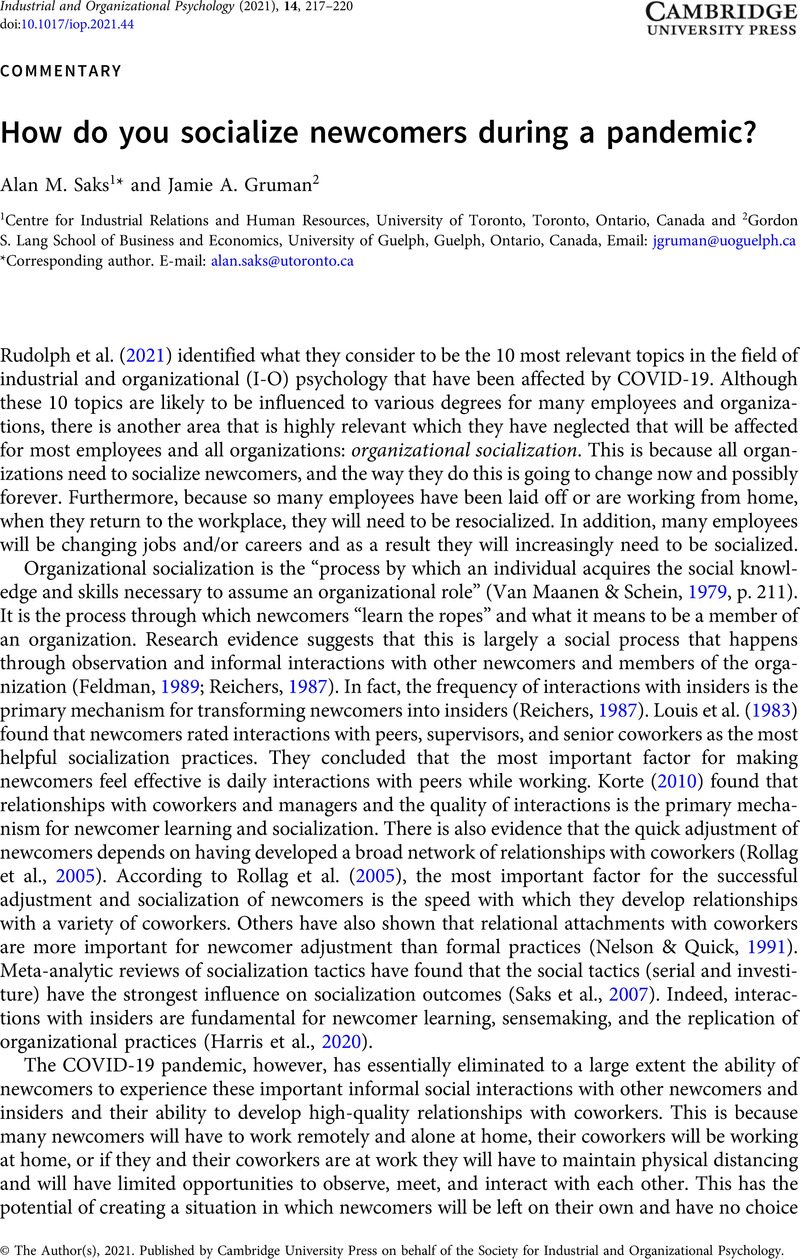Crossref Citations
This article has been cited by the following publications. This list is generated based on data provided by Crossref.
Jiang, Jane Yan
Ashforth, Blake E.
and
Li, Jia
2022.
The long walk together: The role of institutionalized socialization in shaping newcomers' future expectations about their networks.
Journal of Vocational Behavior,
Vol. 137,
Issue. ,
p.
103757.
de Boer, Charlotte
and
Delobbe, Nathalie
2022.
Enseignement à distance dans une école de management hôtelier : conséquences sur les étudiants et ressources pour y faire face.
Raisons éducatives,
Vol. N° 26,
Issue. 1,
p.
237.
2022.
Psychologie et carrières.
p.
307.
Delobbe, Nathalie
and
de Boer, Charlotte
2023.
Formation et socialisation organisationnelle.
Savoirs,
Vol. N° 63,
Issue. 2,
p.
11.
Sreya, B.
Lakshmana Rao, Ayyagari
Ramakrishnan, G.
and
Kulshretha, Nikhil
2023.
Emerging work environments in the pandemic era: a gendered approach to work-life balance programs.
Frontiers in Sociology,
Vol. 8,
Issue. ,
Karlsson, Matilde
Zaar Mårs, Olivia
Jenner, Bo
and
Frögéli, Elin
2024.
Effect of working remotely on new professionals’ learning and adjustment during the first five weeks after professional entry.
Journal of Workplace Learning,
Skountridaki, Lila
Lee, W. Victoria
and
Rouhani, Lilinaz
2024.
Missing voices: Office space discontent as a driving force in employee hybrid work preferences.
Industrial Relations Journal,
Vol. 55,
Issue. 1,
p.
54.
Stor, Marzena
2024.
The effects of staffing on company performance results: the mediating role of HRM outcomes in the specific contexts.
International Journal of Productivity and Performance Management,
Vol. 73,
Issue. 9,
p.
3054.
Pulman, Andy
and
Fenge, Lee-Ann
2024.
The Evolving Workplace: The Possible Impacts of Hybrid Working and Hotdesking on Retention of Social Workers.
The British Journal of Social Work,



